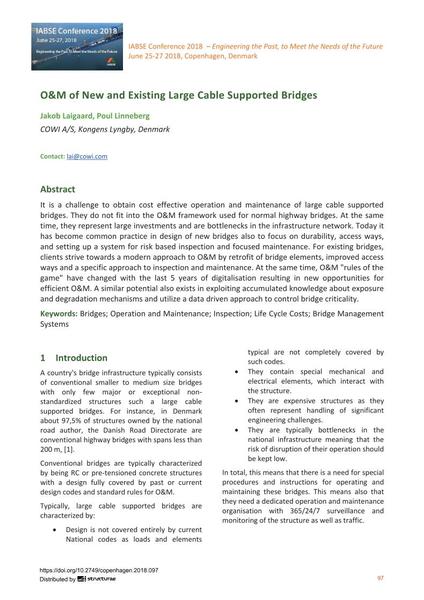| Médium: |
papier de conférence |
| Langue(s): |
anglais
|
| Conférence: |
IABSE Conference: Engineering the Past, to Meet the Needs of the Future, Copenhagen, Denmark, 25-27 June 2018 |
| Publié dans: |
IABSE Conference Copenhagen 2018 |
|
Page(s):
|
97-104
|
Nombre total de pages (du PDF): |
8 |
|
|
Page(s):
|
97-104
|
| Nombre total de pages (du PDF): |
8 |
| DOI: |
10.2749/copenhagen.2018.097 |
|
Abstrait:
|
It is a challenge to obtain cost effective operation and maintenance of large cable supported
bridges. They do not fit into the O&M framework used for normal highway bridges. At the same
time, they represent large investments and are bottlenecks in the infrastructure network. Today it
has become common practice in design of new bridges also to focus on durability, access ways,
and setting up a system for risk based inspection and focused maintenance. For existing bridges,
clients strive towards a modern approach to O&M by retrofit of bridge elements, improved access
ways and a specific approach to inspection and maintenance. At the same time, O&M "rules of the
game" have changed with the last 5 years of digitalisation resulting in new opportunities for
efficient O&M. A similar potential also exists in exploiting accumulated knowledge about exposure
and degradation mechanisms and utilize a data driven approach to control bridge criticality.
|

